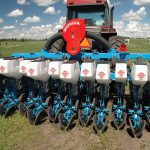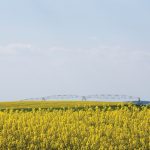
Irrigation

How to understand and measure soil water
It’s important to estimate stored soil moisture at planting to adjust crop inputs

Carbon price exemption for farm gas clears Commons
Bill C-234 next headed to Senate

Les Henry: Twenty-seven years of crops at my Dundurn farm
And a few lessons learned

The benefits of irrigation in Alberta
Irrigation plays a significant role in increasing crop and livestock production

‘Normal’ spring ahead for most of the Prairies
Below-normal rains expected for southern Alberta, western Saskatchewan

Strategies to increase your field’s potential
A panel discusses the importance of soil structure, tile drainage benefits and using precision ag and conservation to increase farm profitability

In search of a uniform crop stand
Seeding research and technology are working to help farmers increase yields with potential to reduce input costs

Les Henry: Why do wells flow?
How to plug them and how not to plug them

Meta-analysis in canola
A review of nutrient and water use efficiency studies provides some valuable insights for farmers

Nitrogen fertilizer management to reduce nitrous oxide emissions, Part 2
Adopt 4R practices appropriate for your farm’s crops, soils, landscapes and agro-ecological areas


